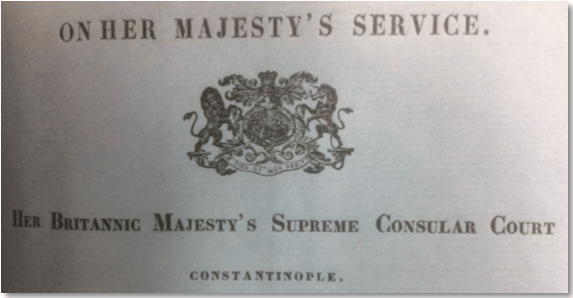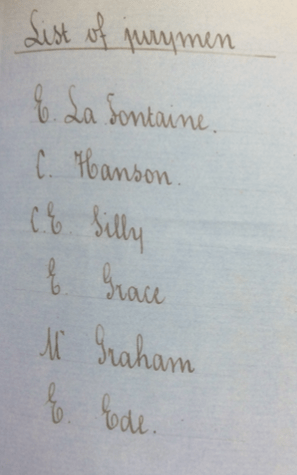In Chapter 1 of A Court at Constantinople, James Bingham, a young English barrister, is asked to become a law clerk for Her Britannic Majesty’s Supreme Consular Court at Constantinople. Bewildered, James asks himself, “But a British court in the Ottoman empire?”

My choice to center a novel on the British Supreme Consular Court at Constantinople drew head-scratching reactions when I described the story to friends and colleagues. Constantinople, sure, the fabled city and all that. But, as far as I could tell, nineteenth century consular courts have not been popular settings for historical fiction.
The choice had practical and philosophical motivations. Courtroom drama can be a powerful device in fiction, no matter the time period. My novel has three criminal trials, starting with R v. Sinclair, that drive the plot and character development. In an otherwise unusual context, courtroom action provided a familiar, accessible way to help weave a tale with themes involving law and justice.
But, for the novel, the British Supreme Consular Court was more important to me because it was where Her Majesty’s Government implemented the “standard of civilization” in international law. Briefly, European countries created and applied the standard to categorize nations as “civilized” and “uncivilized”–a distinction that accorded “civilized” nations more rights under international law and greater influence in international society. Under the standard, the British were “civilized,” and the Ottomans were “uncivilized.”
I was familiar with the “big picture” political and ethical issues the standard of civilization raised in international relations during the nineteenth and early twentieth centuries. From Gerritt W. Gong’s The Standard of “Civilization” in International Society (Clarendon Press, 1984) to the post-Cold War development of Third-World Approaches to International Law (TWAIL), academic and advocacy literature had fleshed out the standard’s history and legacy.
But I always wondered what the flesh-and-blood implementation of this standard actually involved. Scratching that itch required digging into diplomatic archives, and, in my case, the correspondence between the Foreign Office in London and the British Supreme Consular Court at Constantinople.

This court, like the consular courts of other European powers at the time, was where the standard of civilization operated on a day-to-day basis. What I found in the archives shaped the story in A Court at Constantinople. However, the archival and other primary materials hinted at more than just a “clash of civilizations” between the British and Ottoman empires. The novel weaves into the tale clashes happening within each civilization to take advantage of the expanded thematic aperture.
So, yes, a British court in the Ottoman empire. It is for the reader to reach a verdict as to whether I have done justice to this choice.